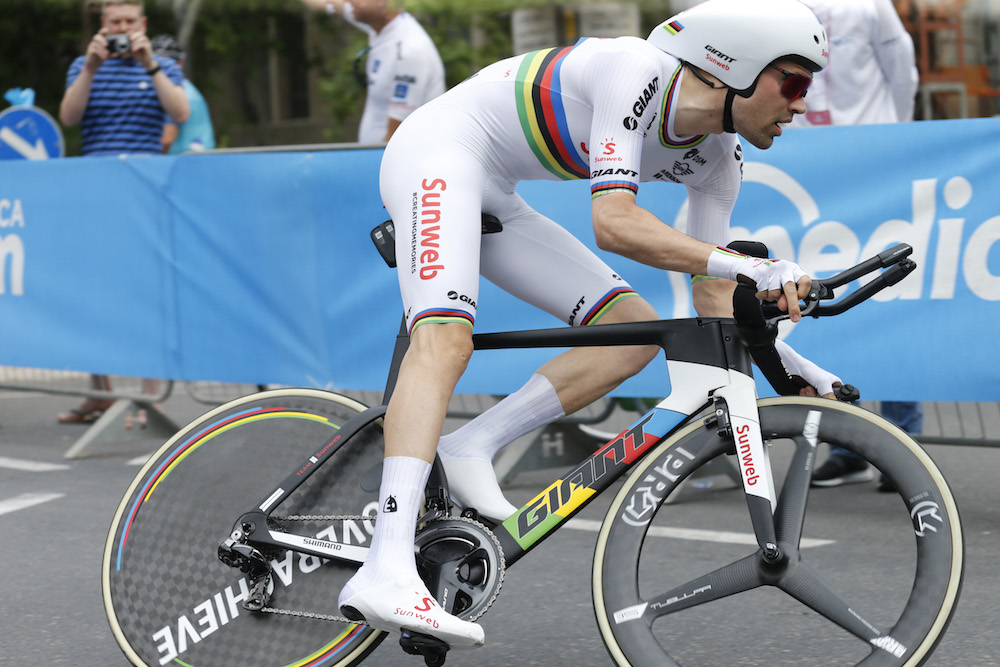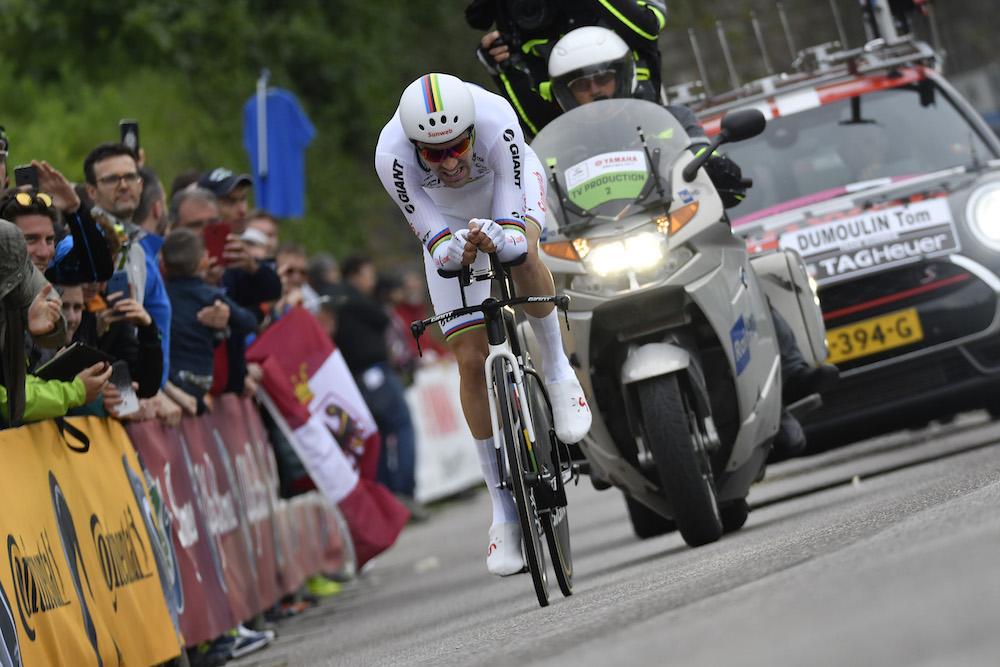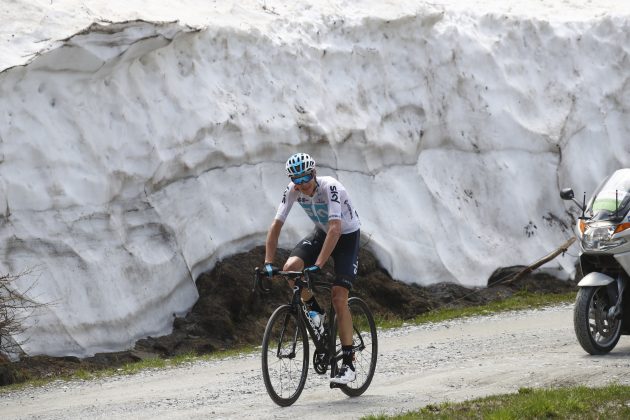Giro d'Italia 2019 route analysis: not as time trial friendly as it seems
Tough mountain stages mean time trial advantages may play less of a deciding factor

Image: Sunada
At first glance, Wednesday’s confirmation that next year’s Giro d’Italia route would feature time trials in Bologna, San Marino and Verona would suggest that this will be a Grand Tour for specialists against the clock.
No Giro has included as many as three individual time trial stages since the 2009 edition, and the total of 58.5km against the clock amounts to more than twice that of the Tour de France route announced last week.
>>> Best Black Friday deals for cyclists
So should a rider like Tom Dumoulin, who has in the past picked which Grand Tour to target based on the route’s suitability to his characteristics, and who has expressed disappointment at the lack of time trialling in the 2019 Tour de France route, plan to ride the Giro instead? Not necessarily.
For starters, there might be more time trial stages than usual, but that does not translate into a higher total of time trial kilometres. In fact, excluding last year’s edition, the last time the Giro featured a fewer number was back in 2012; and even when you discount mountain time trials, two of the last four editions have still had a higher number.
Then there’s the parcours of each of the time trials. It’s true that none are up mountains, but neither are they in the pan-flat mould that heavy powerhouses relish and lightweight climbers dread.
The opening 8.2km course in Bologna and stage nine’s 34.7km effort to San Marino both end with considerable kicks upwards that ensure about a quarter of each course is ridden uphill, while the final stage to Verona is dominated by a climb and descent crested 9km into its 15km distance.
Get The Leadout Newsletter
The latest race content, interviews, features, reviews and expert buying guides, direct to your inbox!

Lastly, the total amount of time trial kilometres is not significant in isolation, but rather how many there are in relation to the amount of climbing in the race - and at next year’s race, as with every Giro, there is a lot, with a total of seven summit finishes and some absolutely deadly climbing in between.
There are therefore ample opportunities for the climbers to take back time, and the severity of some of some of the mountainous stages means the time differences here could dwarf that gained and lost in the time trials.
Take last year’s 19, when Chris Froome famously attacked over 80km from the line on the Colle delle Finestre. That day the parcours was difficult enough for him to take over three minutes out of everyone else, for Simon Yates’ (Mitchelton-Scott) and Domenico Pozzovivo’s (Bahrain-Merida) chances to end completely, and the rest of the top-10 to be separated by several minutes.
The Tour tends to forego such ultra-hard days in the mountains, but they are again a feature of this year’s Giro route - stage sixteen and its back-to-back ascents of the formidable Passo Gavia and Passo di Mortirolo stand out, as does the five climbs packed into 131km on stage 14.
Despite the greater number of time trialling, therefore, it could be argued that the Giro is even more climber friendly than the Tour, which should give pause to any GC rider considering prioritising it because of those three stages.

Another characteristic of the route is how backloaded it is. The first week is lacking in the kind of difficult early stages synonymous with the Giro, and the first proper summit finish doesn’t occur until stage 13.
This should favour third week specialists like Vincenzo Nibali (Bahrain-Merida) and Steven Kruijswijk (LottoNL-Jumbo), who tend to grow into Grand Tours and have had past GC bids hampered by early time losses, while Simon Yates, who gained so much time during the first half of last year’s race, would have to adopt a different strategy were he to return again next year.
When the serious climbing kicks in from stage thirteen onwards, the race will also be very difficult to control. The key GC stages have not been designed as straightforward proccessions building up to a race on the final climb - the most difficult mountains tend to come earlier on, with a gentler ascent often reserved for the finish.
So, whether their leader is Chris Froome (who hasn’t ruled out another appearance), Geraint Thomas (who has ‘unfinished business’ here) or someone else, don’t expect Team Sky to be able to tap out a rhythm and nullify the opposition - this is going to be a chaotic race with many opportunities to attack.

Thank you for reading 20 articles this month* Join now for unlimited access
Enjoy your first month for just £1 / $1 / €1
*Read 5 free articles per month without a subscription

Join now for unlimited access
Try first month for just £1 / $1 / €1
Stephen Puddicombe is a freelance journalist for Cycling Weekly, who regularly contributes to our World Tour racing coverage with race reports, news stories, interviews and features. Outside of cycling, he also enjoys writing about film and TV - but you won't find much of that content embedded into his CW articles.
-
 Gear up for your best summer of riding – Balfe's Bikes has up to 54% off Bontrager shoes, helmets, lights and much more
Gear up for your best summer of riding – Balfe's Bikes has up to 54% off Bontrager shoes, helmets, lights and much moreSupported It's not just Bontrager, Balfe's has a huge selection of discounted kit from the best cycling brands including Trek, Specialized, Giant and Castelli all with big reductions
By Paul Brett
-
 7-Eleven returns to the peloton for one day only at Liège-Bastogne-Liège
7-Eleven returns to the peloton for one day only at Liège-Bastogne-LiègeUno-X Mobility to rebrand as 7-Eleven for Sunday's Monument to pay tribute to iconic American team from the 1980s
By Tom Thewlis